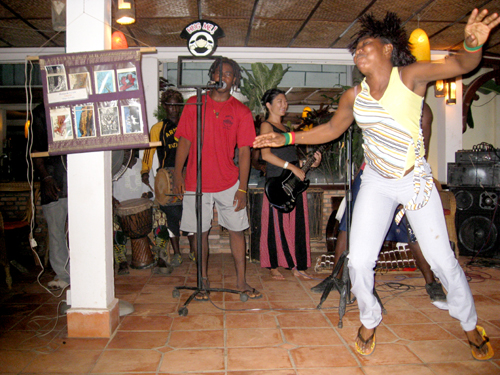(See below for my previous India posts. It's been a while since I last posted for our trip.)
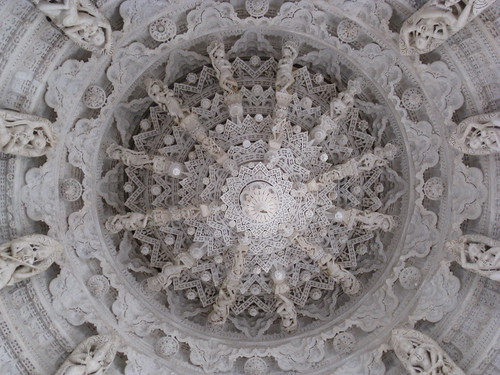
On the move, always on the move. After an enjoyable couple of days in Udaipur, we had another 6-hour drive, which made me wonder if the trip to Udaipur was worth it.
That said, if we hadn't done the driver-to-Udaipur thing, we wouldn't have gotten to visit Ranakpur, which was well worth the time. Ranakpur is home to the largest (or second largest) Jain temple in the country. AMAZING.
We got there over an hour before it was due to open to the public (those Jains are strict!), so we piled into a nearby roadside restaurant, where we figured we'd have a couple of masala chais and listen to Ramesh make fun of us in Hindi some more. But Ramesh also called over a very interesting guy, a gentleman whose name escapes me, with slicked back hair and a goatee and a red dot, who told us a great deal about the temples to pass the time to opening, and even bought us a chai.
He was a local who, as we found that English speaking Indian locals are wont to do, told us about his friends abroad and how they love to visit him here. His beard also reminded me a little of my pal Butch Schuman, so that charmed me as well. We sat and chatted until it was close to the time for the temple to open. Which is when he offered, as had most of the people we met through Ramesh, to do a service that would relieve us of some money.
Being Hindi, our man could not work as a guide in the Jain temple. BUT, he could "by chance, meet us" in the temple, give us info and background on the temple as a guide would, and maybe we could help him out with a few rupees on the way out. As Ramesh-related schemes went, it was a tame one, so we took him up on it.
Ranakpur is home to two temples, a small one and a big one. The small temple was lovely, and we were actually allowed to take photos in it. We looked around the top and bottom floors in it, and even received sandalwood color dots on our foreheads. Outside, there were carvings of apsaras in a variety of positions, including a number of sexual ones. Gotta love that. There were a few monks walking in & out of the temple, and normal Indian folks going in to make offerings and receive blessings, though they pretty much ignored us. 
Soon enough, we did “run into”: our goateed friend, and, friendly sort that he was for a stranger, he told us more about the myths and legends of the Jain religion, and how that was to inform the things we would see in the main temple. We thanked him, told him we were glad to meet him, and went on our way. Were we supposed to give him money surreptitiously right there & then? I couldn’t remember. I don’t think so.
Both lovely but the big one is something special. INCREDIBLY detailed sculpture and ceramics work from floor to ceiling. There were something like 133 pillars in the place, all straight as a line except for the 133rd one, which was intentionally made crooked as a reminder that only god is perfect.
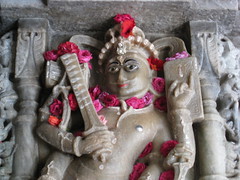 We also saw a carving that looked like our friend Steve.
We also saw a carving that looked like our friend Steve.
One of the holy men at the temple was taking sandalwood to make it into paint, and offered to let me take his photo. I did gladly, after which he pointed decisively to his donation bowl. How pious. Guess the holy man shtick doesn’t pay as well as one thinks.
The jain temples we encountered tend to be made of white or grey marble, and spotlessly clean. Very different from, say, the hindu temple we visited in Delhi, which seemed to be spotted with every type of animal shit known to man. Hindu temples are crowded, colorful, cluttered affairs, whereas the Jain temples were anything but.
After spending a blissful hour or so mesmerized by the intricacy and beauty of the place, we left. On the way off of the grounds, I took a group photo for a clean-cut young family making pilgrimage to this place. They were so appreciative that they asked me if I’d take a photo with them. Sure, why not?
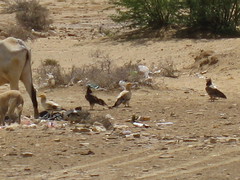 Then, on to Jodhpur. On the way, we stopped at another of Ramesh’s tourist trap restaurants…huge places in the middle of nowhere, that all looked alike: dozens of tableclothed tables, exorbitant prices, western candies and chips for sale at the cashier, and a huge attached gift shop. It was like visiting an Indian Stuckey’s.
Then, on to Jodhpur. On the way, we stopped at another of Ramesh’s tourist trap restaurants…huge places in the middle of nowhere, that all looked alike: dozens of tableclothed tables, exorbitant prices, western candies and chips for sale at the cashier, and a huge attached gift shop. It was like visiting an Indian Stuckey’s.
On our way in to the Stuckeys, Ramesh pointed out a couple of men with headdresses, waiting by a nearby intersection. Ramesh indicated that they were not only Muslims, but Mafia; that they would follow unsuspecting Hindus to the nearby temple and sell them something, I didn’t quite get what. Flowers, maybe? Ramesh must have been making some of this shit up.
We arrived in Jodhpur several hours later, tired and cranky. We visited a couple of guest houses that looked okay but were too expensive. We were pretty sure that they’d spotted the car, and automatically jacked up the prices on us. Because we clearly had money? Because they knew they’d have to pay the driver commission? We weren’t sure. Ramesh criticized our choices, and after we couldn’t find a place we liked, suggested one that he insisted was much better. Again, wiped out as we were, we decided what the hell, let’s see it. It turned out to be a hotel with dozens of rooms, but we found one that we managed to negotiate down to a reasonable rate (provided we didn’t’ turn on the AC), and ate dinner at the hotel rest.
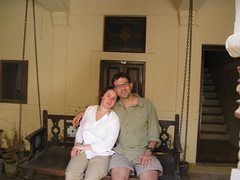 We met a swiss couple who looked fairly tired, and were in fact on a car & driver tour as well. Turns out they didn’t realize just how big rajastan was, and by booking a 7-day trip, they were being driven maybe 10 hours a day to each destination, seeing it for a minimum of time, then on to the next planned stop with barely the time to look around. They made our trip look like luxury.
We met a swiss couple who looked fairly tired, and were in fact on a car & driver tour as well. Turns out they didn’t realize just how big rajastan was, and by booking a 7-day trip, they were being driven maybe 10 hours a day to each destination, seeing it for a minimum of time, then on to the next planned stop with barely the time to look around. They made our trip look like luxury.
But our day didn’t stop there, oh no. having eaten, rested, washed, and even done a bit of laundry, we set out into the old town’s open market. It was dusty, packed, busy, noisy, and wonderful. Fruit stands abounded, stands selling new and used clothing, meats, fabrics, snacks, spices, even fruit juices. I tried to haggle for fruit and was soundly rebuffed, leading me to wonder if, hey, maybe they are giving me the actual price for this stuff. That was our first sign that this market was not here for the tourists, but was in fact, real. The crowds of Indians should have tipped us off, but still.
All it took was a glimpse of fabric and sari stalls for Natacha to lead us on a merry chase for saris and, what we soon discovered were sumbwa suits—a sort of three-piece sari-like pants suit that caught natacha’s eye. We ventured deep, DEEP into the market labyrinth, checking what seemed like dozens of fabric and clothing shops, looking for just the right ones. I believe that’s the night I bought my new sarongs. They were actually a three-piece sumbwa suit that, like all of them, were just the fabric. For the actual suit, one has to go to a tailor to get it fitted. We did find Natacha a long top or two that she liked and wore for the rest of our trip.
On the way back, something happened that made us love Jodhpur even more
We were doing out best to find the clock tower (the central point of the market), and failing, getting caught in foot traffic, people traffic, and that uniquely Indian combination of both.
A man with a very young child asked us where we were going. Backpackers will know this question as the ubiquitous question asked all travelers, sometimes to start a sales pitch, sometimes as entre to practice their English, rarely out of actual concern. Except in this case. We told him where we wanted to go, he told us, and kept walking. To us, this was so far unheard of. He ACTUALLY gave us directions!
Not only that, but once he noticed we werer getting off track (we were all in shoulder-to-shoulder foot traffic), he came back over and pointed out the proper direction. Thus making Jodhpur the only city thus far where we were actually treated like people and not wallets with legs.
PREVIOUS INDIA POSTS:
India Day 1: Good God, We’re Here
Day Two/Delhi: In Which We Punt
India Day 3: Boo-yah
India at 80 KPH
A few thoughts while natacha’s off using skype
India Day 4: Musical Guesthouses
India Day 5: Jaipur, Fort, Shopping
India Day 6: Huckster Ghats and Hippie Ghettos
(UPDATE: Many) Indians are short
India Day 7: Guilt and Papayas
India Day 8: City Palace, yes. Lake Palace…?
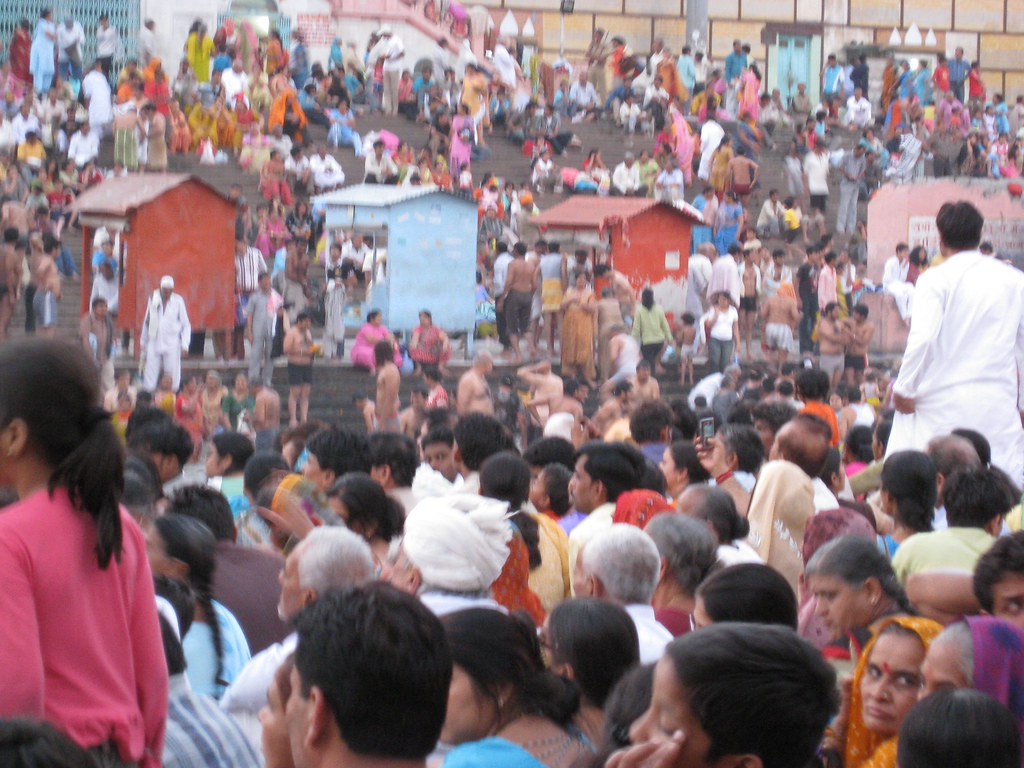 Here in Haridwar, at the source of the Ganges river, people go to the ghats here to purify themselves in the waters. But every night thousands come here to honor their dead. So, just before sunset, we set out to the river Ghats, for the sunset ceremony.
Here in Haridwar, at the source of the Ganges river, people go to the ghats here to purify themselves in the waters. But every night thousands come here to honor their dead. So, just before sunset, we set out to the river Ghats, for the sunset ceremony.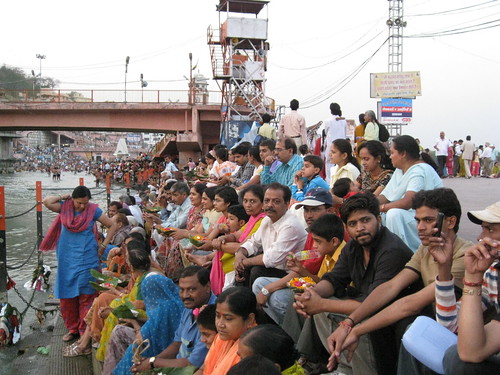 Occasionally someone in a uniform would shout orders at the crowds, in a tone that seemed more explanatory than harsh. I’m pretty sure he was telling all of us how the ceremony would go, what to do, and when. Occasionally he would reach his hand into the water and splash everybody, making him seem like some sort of jovial univormed tour guide. Natacha freaked out at having the water splashed on her, and I wasn’t too happy about it either. As it turns out, since it’s the source of the ganges, it’s fairly clean and extremely cold.
Occasionally someone in a uniform would shout orders at the crowds, in a tone that seemed more explanatory than harsh. I’m pretty sure he was telling all of us how the ceremony would go, what to do, and when. Occasionally he would reach his hand into the water and splash everybody, making him seem like some sort of jovial univormed tour guide. Natacha freaked out at having the water splashed on her, and I wasn’t too happy about it either. As it turns out, since it’s the source of the ganges, it’s fairly clean and extremely cold.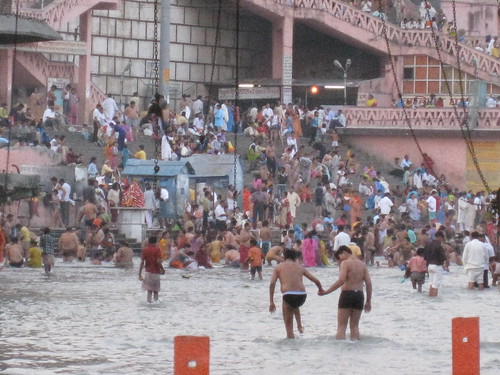 The sun set and the ceremony began. A number of people had jumped the gun earlier, but once the sky darkened, thousands of little floats, each lit by a single candle, made their way down the Ganges, each one a remembrance of a dead loved one.
The sun set and the ceremony began. A number of people had jumped the gun earlier, but once the sky darkened, thousands of little floats, each lit by a single candle, made their way down the Ganges, each one a remembrance of a dead loved one.

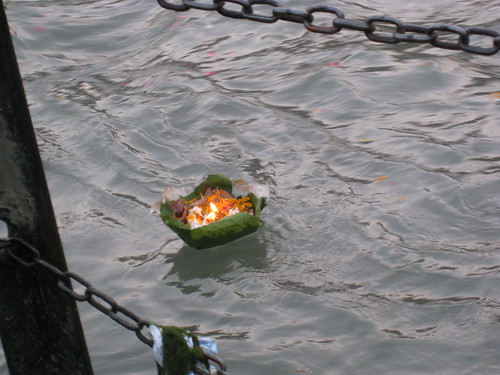

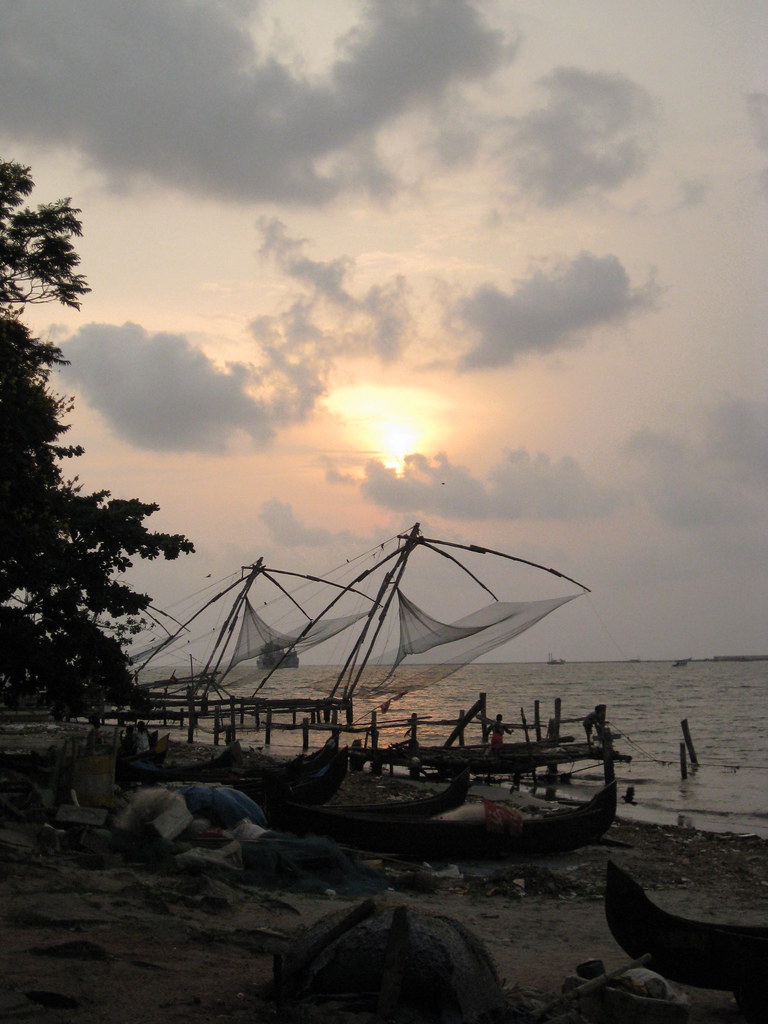
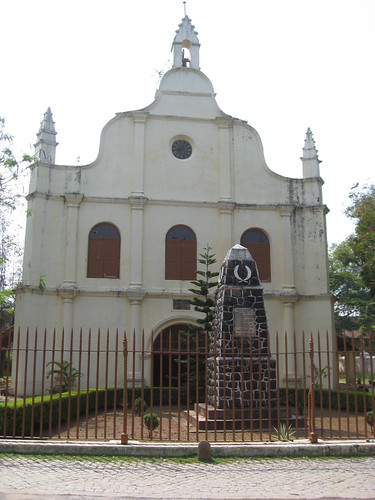
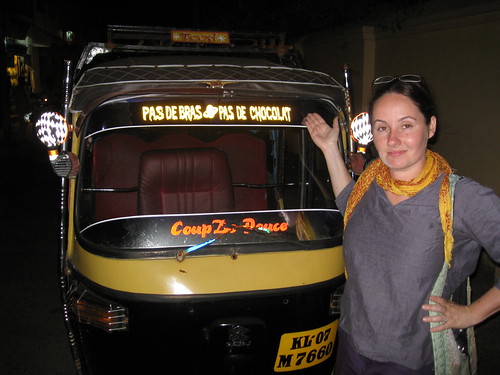
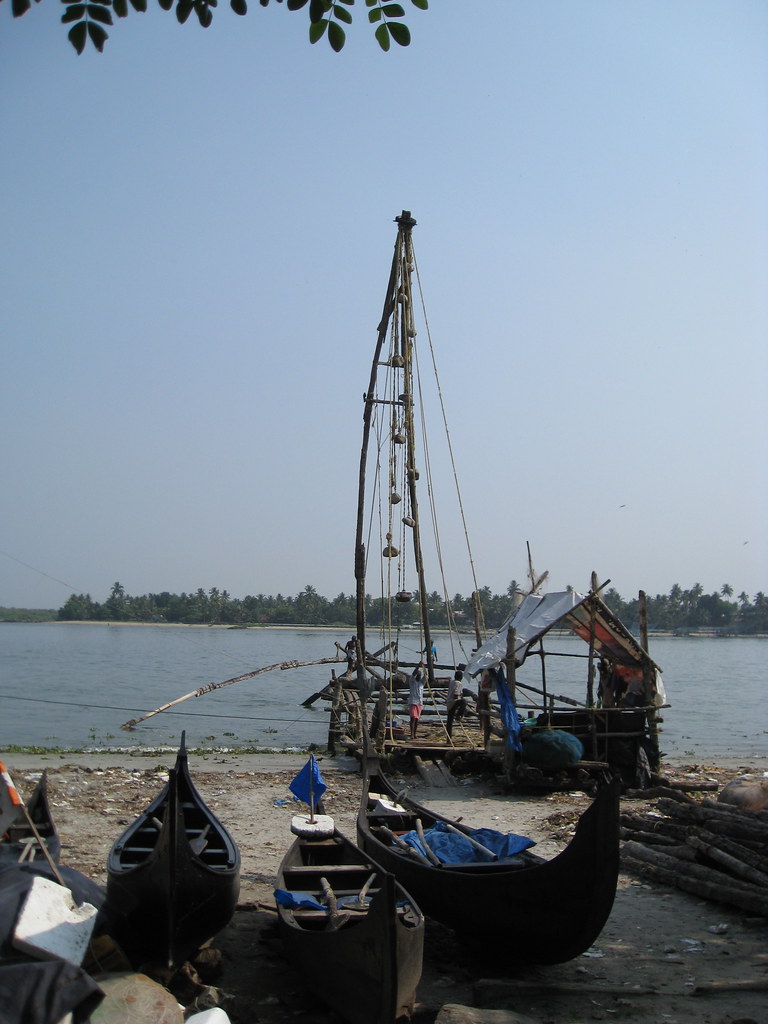
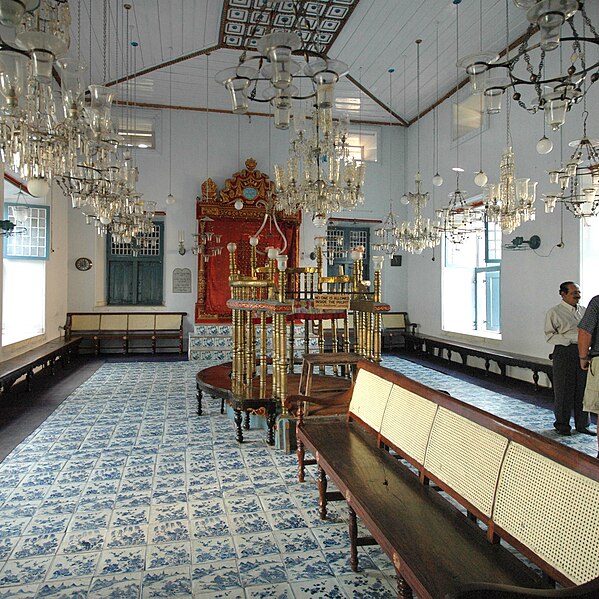
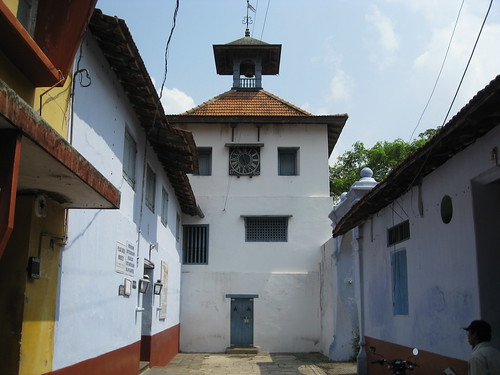

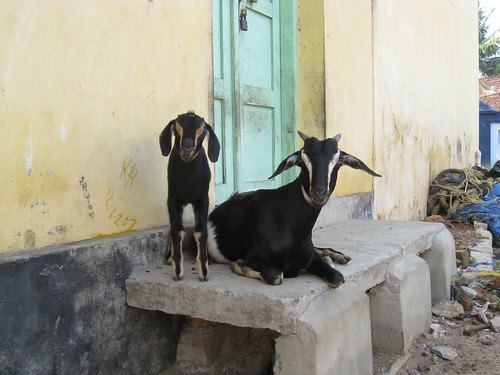
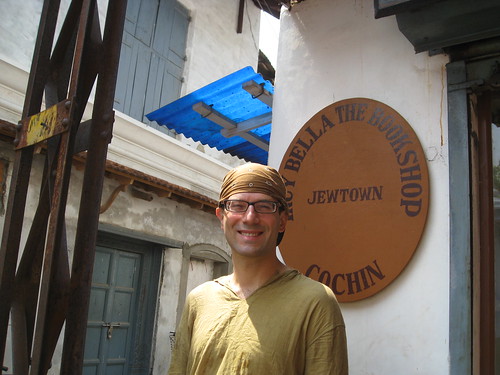
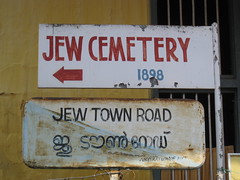
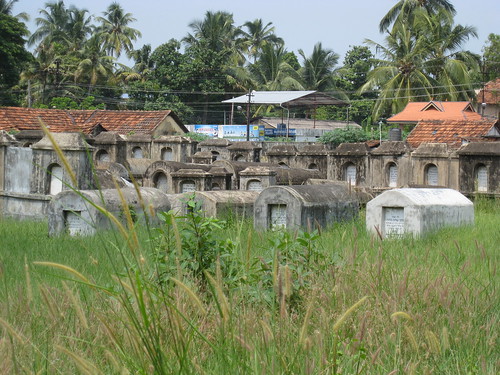
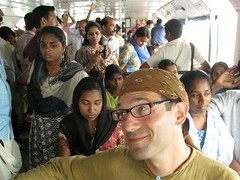
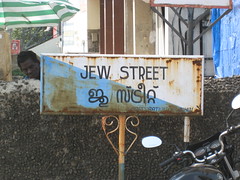

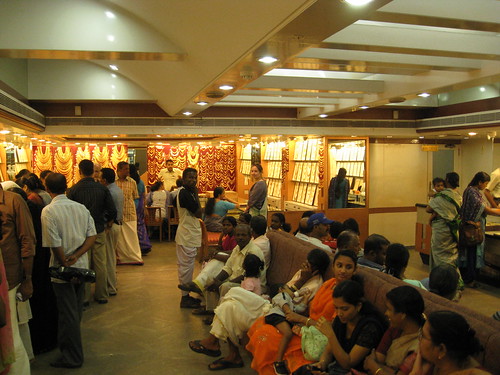

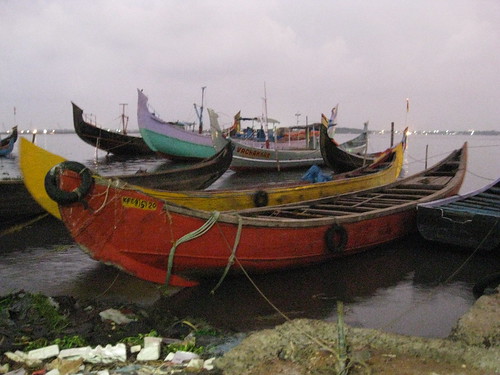
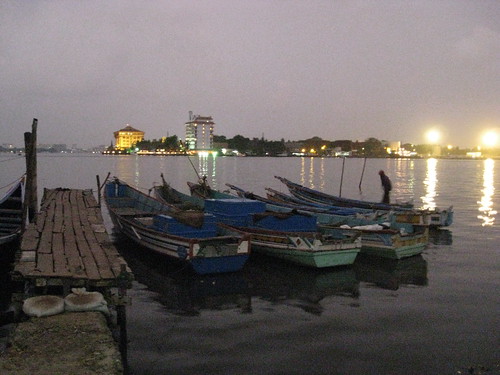
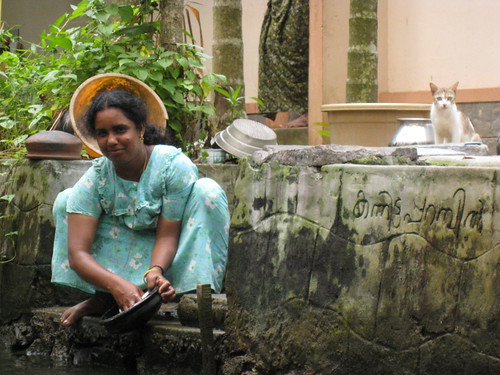
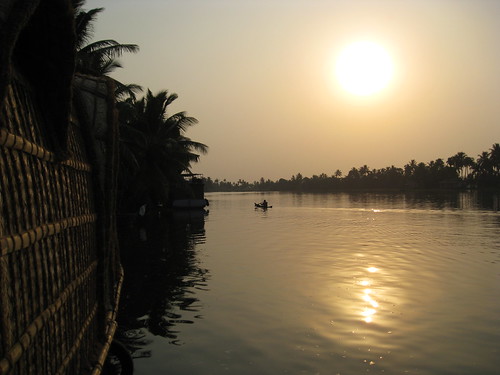
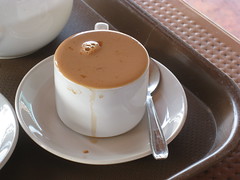
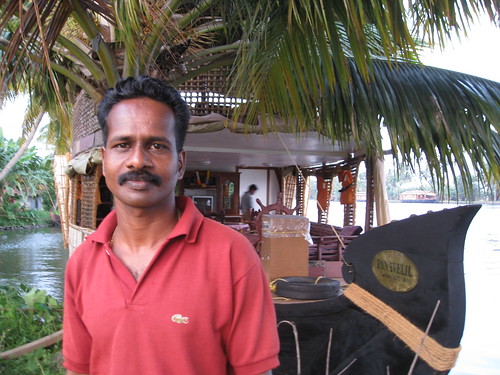
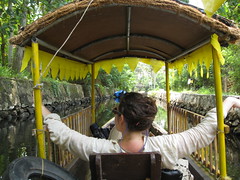
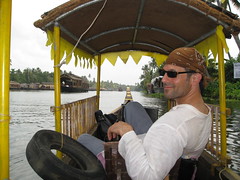
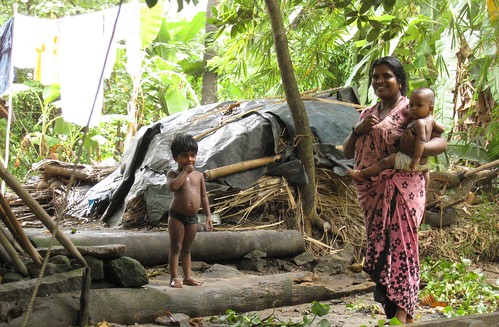
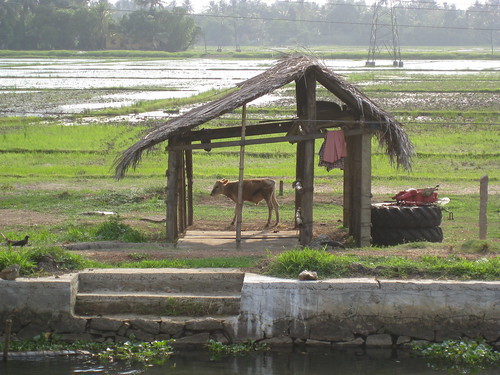


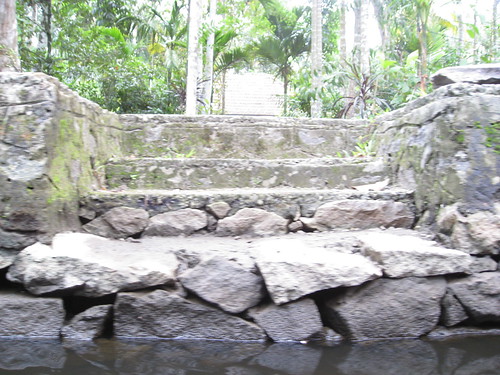

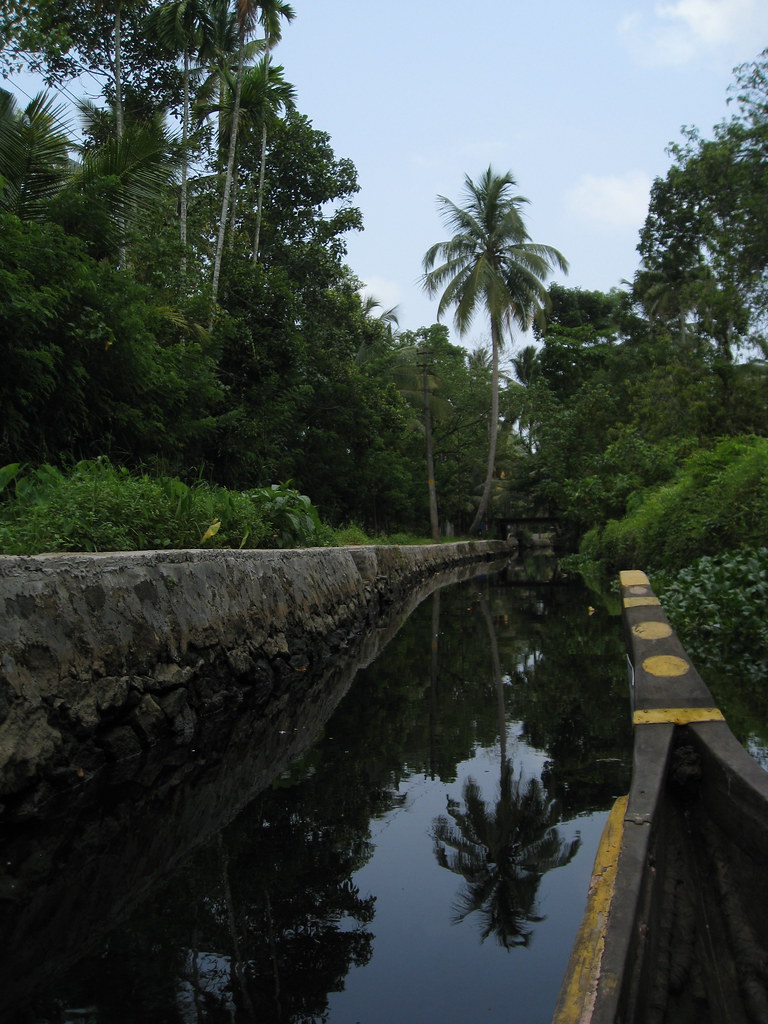
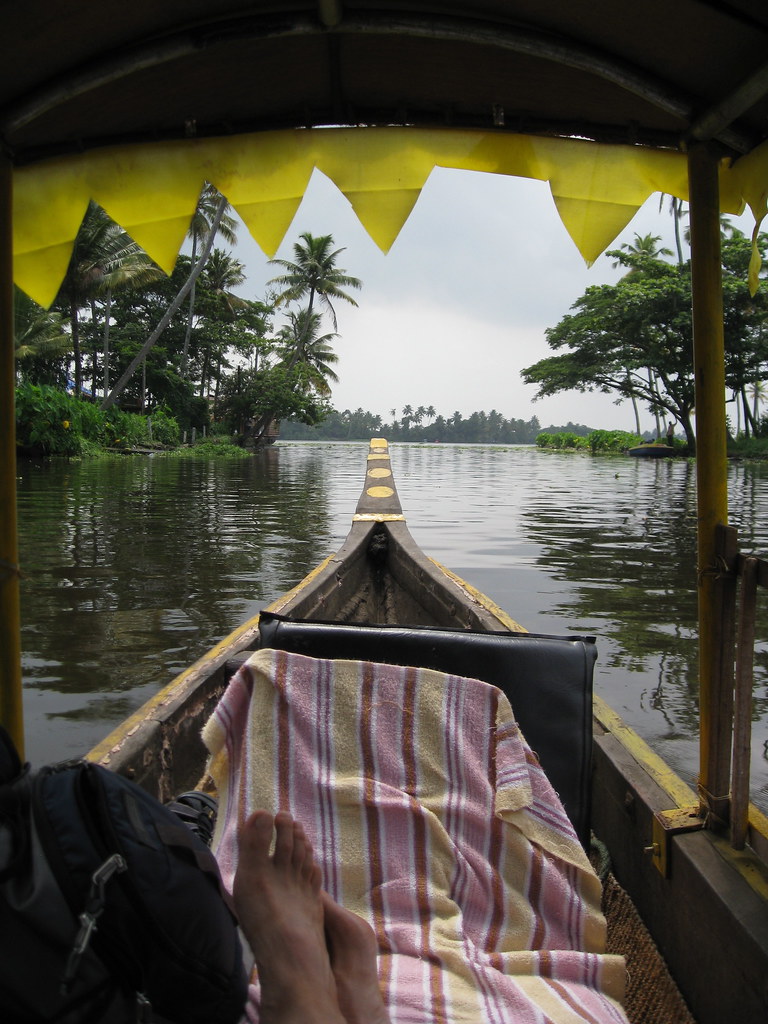
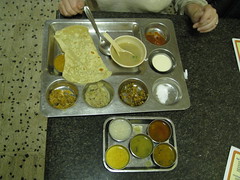
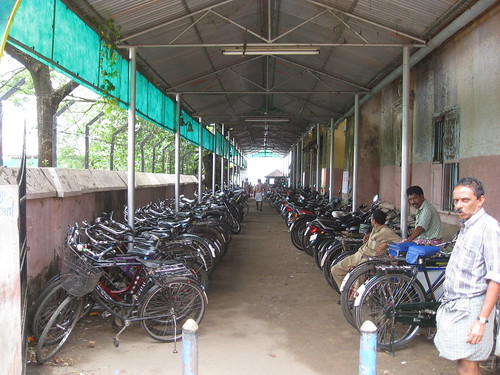





















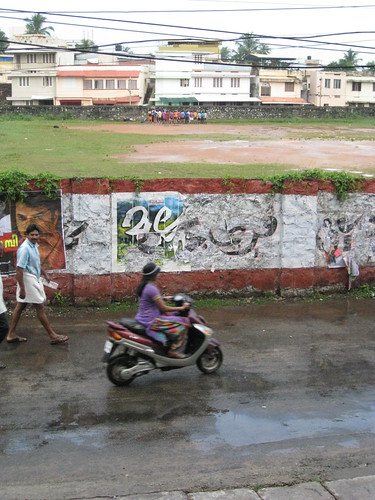
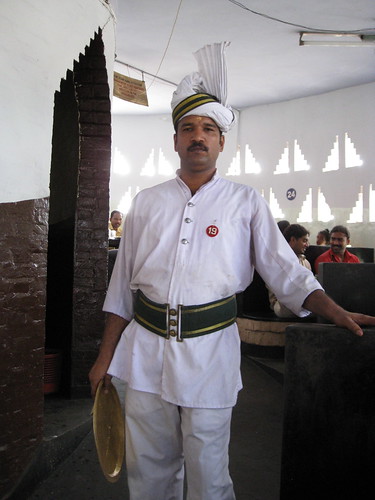

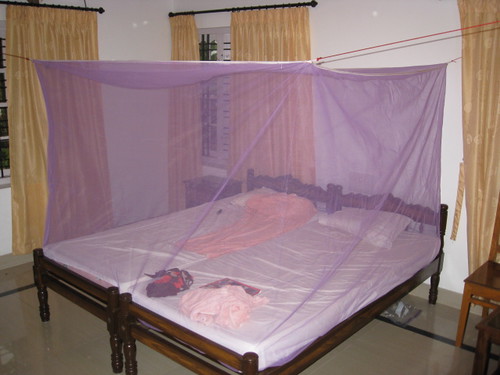
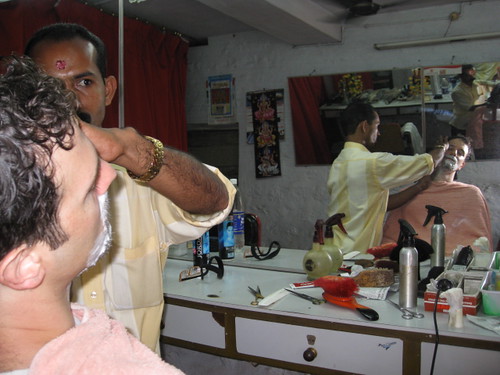
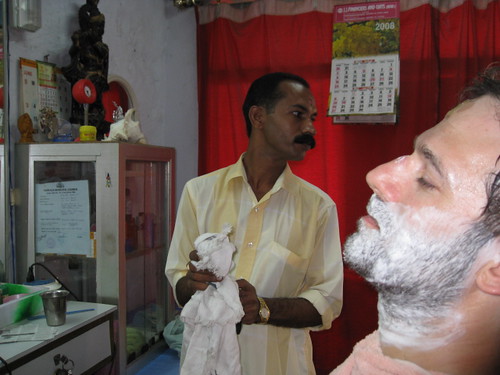


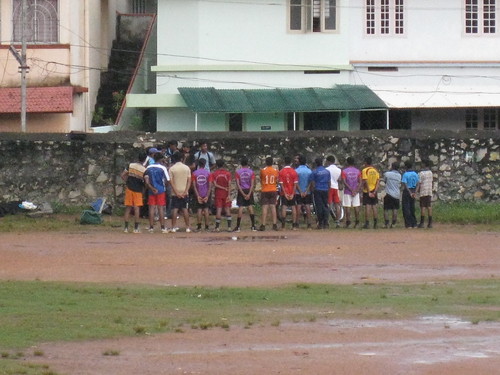
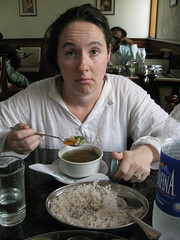
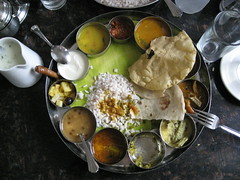
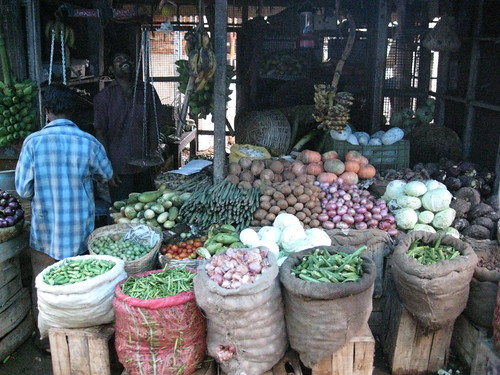

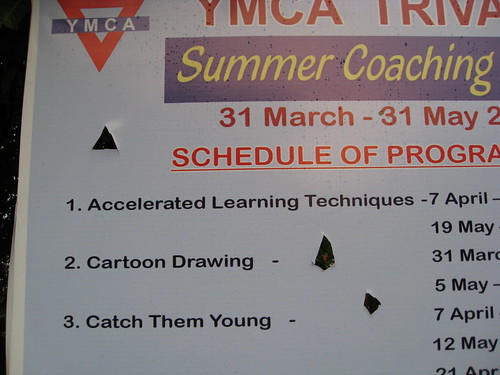
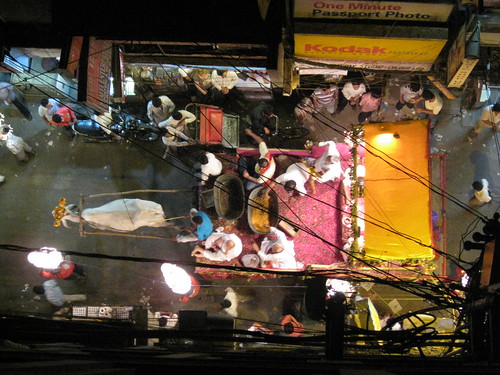
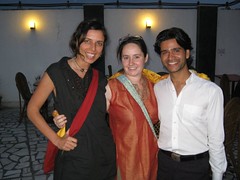
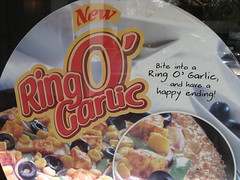
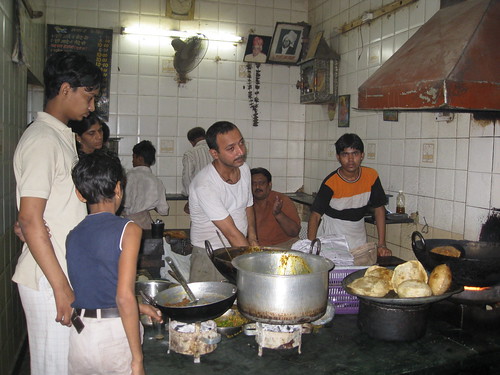
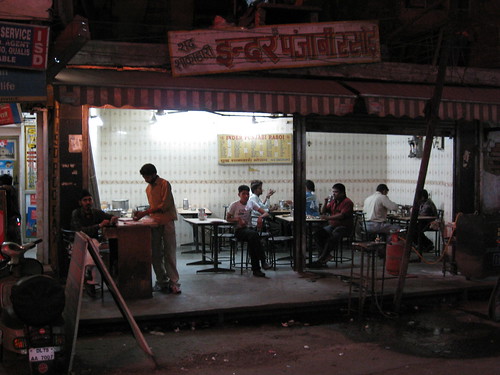
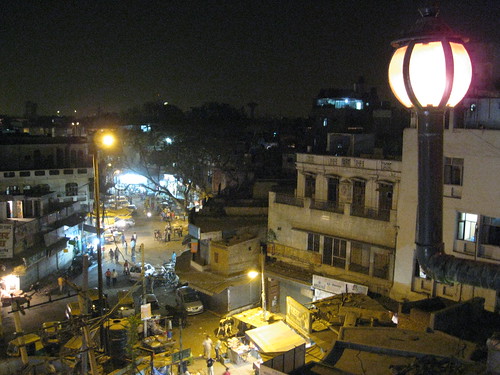
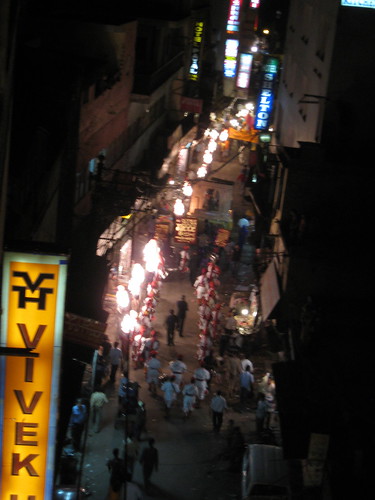

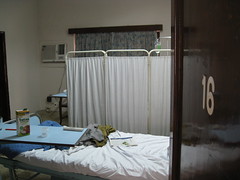



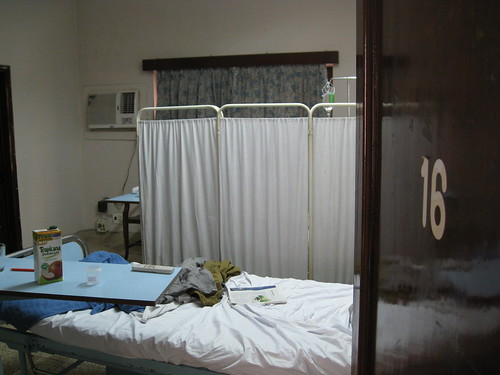
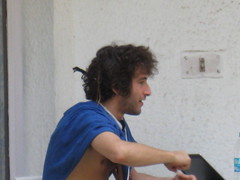


 We also saw a carving that looked like our friend Steve.
We also saw a carving that looked like our friend Steve.

 (Photos from
(Photos from 

 (Photo source:
(Photo source: 
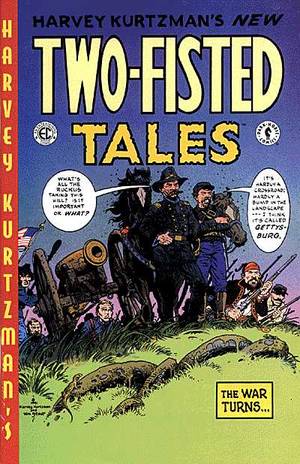 Some of you know that umpty-ump years ago, I worked in New York City as a comic book editor. One of the books I helped
Some of you know that umpty-ump years ago, I worked in New York City as a comic book editor. One of the books I helped 
 The historical background you need to know is this: The Viet Minh dug tunnels in the 40s and 50s in order to hide from, escape from, and otherwise fight the French. In the 60s & 70s, the Viet Cong used them to do the same for the US.
The historical background you need to know is this: The Viet Minh dug tunnels in the 40s and 50s in order to hide from, escape from, and otherwise fight the French. In the 60s & 70s, the Viet Cong used them to do the same for the US.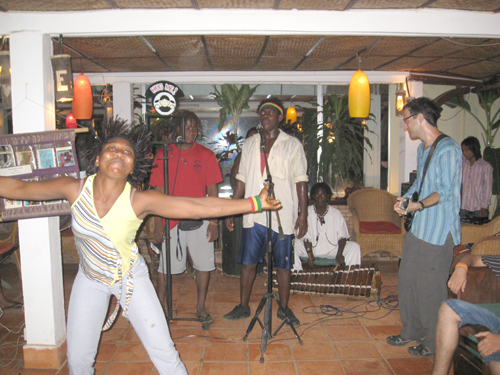 At least I think it was day 6. We're moving so fast now that I barely have enough time to blog...but I absolutely HAVE to document our Saturday night in Siem Reap...easily one of the most fun nights in my thirty-some-odd years.
At least I think it was day 6. We're moving so fast now that I barely have enough time to blog...but I absolutely HAVE to document our Saturday night in Siem Reap...easily one of the most fun nights in my thirty-some-odd years.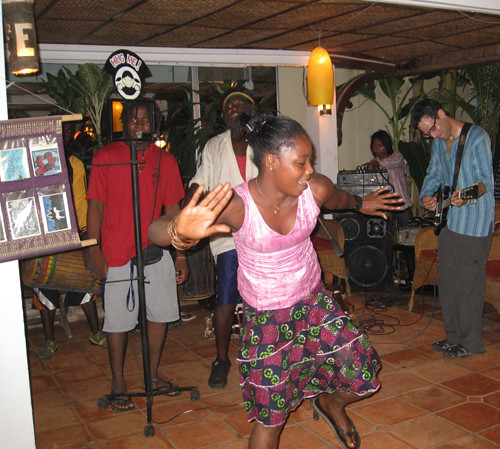 And it was like I'd accellerated into another dimension, one that was bright and clear and powerful and full of the kind of energy I hadn't felt what seems like years. The band was as on as on gets. I left space for Baba to solo, which he did with fluid excellence. I gave the singers some room sing, the dancers room to move, and I felt like I was in a Youssou N'Dour video.
And it was like I'd accellerated into another dimension, one that was bright and clear and powerful and full of the kind of energy I hadn't felt what seems like years. The band was as on as on gets. I left space for Baba to solo, which he did with fluid excellence. I gave the singers some room sing, the dancers room to move, and I felt like I was in a Youssou N'Dour video.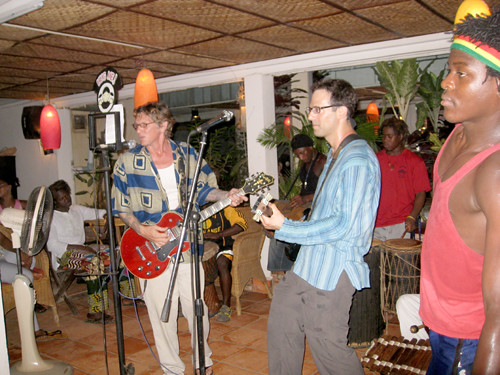 At 17, I traveled through Europe with two friends, busking in the streets, and we landed a gig at a bar in Amsterdam, playing for some Dutch and a bunch of Brits having a bachelor party. we played for 3 hours, I broke 10 strings, and at one point jumped up so high to do a pete townsend move that I hit a ceiling light. I hi That was the greatest night of my life up to that point, and this night in Siem Reap was on a par with that. No question.
At 17, I traveled through Europe with two friends, busking in the streets, and we landed a gig at a bar in Amsterdam, playing for some Dutch and a bunch of Brits having a bachelor party. we played for 3 hours, I broke 10 strings, and at one point jumped up so high to do a pete townsend move that I hit a ceiling light. I hi That was the greatest night of my life up to that point, and this night in Siem Reap was on a par with that. No question.